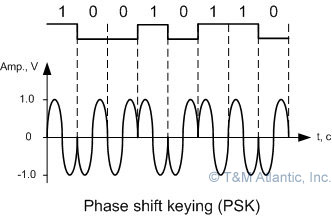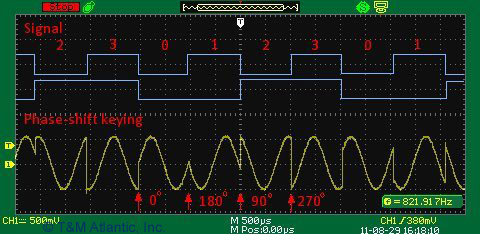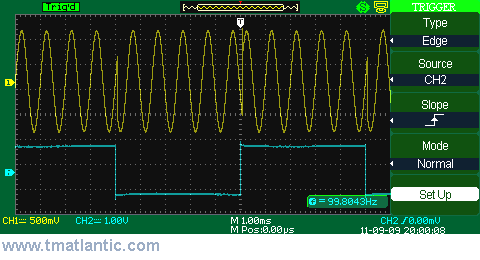| www.tmatlantic.com
Test & Soldering Equipment On-line Store |
|
D.E.V.I.C.E. (Wiki)Calculators Services |
|||||
Filter by first letter
|
PSK – phase shift keyingPhase shift keying is a signal transform method when the carrying oscillation phase changes abruptly depending on the discrete data messages. At phase shift keying each digital symbol has its own carrier signal initial phase matching it, the amplitude stays steady. This shift keying type is more difficult in realization but at the same time it’s more noise-resistant comparing to two other shift keying types. The picture below shows the graphical chart of zeros and unities binary order as well as the relevant phase shift keyed signal chart. Initial phase of 180° matches the binary signal low level, 0° of sinusoidal carrier signal – the high level.
The next picture shows the example of the phase shift keying of sinusoidal carrier signal, two-digit code is an information signal. Initial phase of 0° matches digital code “0”, 180° – code “1”, 90° - code “2”, 270° - code “3”.
Phase shift keying example is shown in the anumated picture below:
|
Site mapPrivacy policyTerms of Use & Store PoliciesHow to BuyShippingPayment




|




























